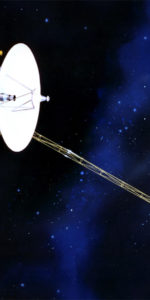
The severity of the current Climate Change “crisis” has been blamed almost exclusively on man-made carbon-dioxide emissions and that the change is permanent. A recent study conducted by several universities as well as NASA point to an “inconvenient truth” – that neither of these statements is true.
Antarctica’s climate was once warm enough to sustain substantial vegetation including trees. How warm? Some estimates place it at 20 degrees warmer than present day.
That temperature was determined after studies were conducted on sediment core samples that contained plant leaf wax. The samples were pulled from beneath the Ross Ice Shelf. According the data that the team gathered, 15-20 million years ago the Antarctic was a far warmer and wetter place than previously imagined. Temperatures have been estimated reaching as much as 45 degrees Fahrenheit and precipitation was several times higher than what the region currently experiences.

This presents a problem for some of the current statements regarding climate change as humans weren’t around during this period. Also given that the region was once so warm and then returned to far chillier temperatures points to another potential problem – climate change appears to be a naturally recurring process and one that is cyclical in nature.
“The ultimate goal of the study was to better understand what the future of climate change may look like,” said Feakins, an assistant professor of Earth sciences at the USC Dornsife College of Letters, Arts and Sciences. “Just as history has a lot to teach us about the future, so does past climate. This record shows us how much warmer and wetter it can get around the Antarctic ice sheet as the climate system heats up. This is some of the first evidence of just how much warmer it was.”
It is normally very difficult to obtain this data as the region experiences massive flows of ice that essentially grinds away all of the evidence for what the climate used to be like. An assistance professor at LSU, Sophie Warny discovered unusually high quantities of algae and pollen in the core samples that were retrieved.

“Marine sediment cores are ideal to look for clues of past vegetation, as the fossils deposited are protected from ice sheet advances, but these are technically very difficult to acquire in the Antarctic and require international collaboration,” said Warny.
The pollen samples are very small, making them difficult to find so the team began looking at the remnants of leaf was that were culled from sediment core samples. Leaf wax serves as a record of climate change because the amount of hydrogen isotopes in the water the plant took in while it was alive can be determined.
From there, scientists used a model that had originally been developed for NASA’s Aura spacecraft to study hydrogen isotopes. JPL scientist Jung-Eun Lee developed means to determine just how different the climate was back during this period.

“When the planet heats up, the biggest changes are seen toward the poles,” Lee said. “The southward movement of rain bands associated with a warmer climate in the high-latitude southern hemisphere made the margins of Antarctica less like a polar desert, and more like present-day Iceland.”
The high point in this period appears to occur approximately 16 million years ago during a period known as the Miocene era. During this time many of the flora and fauna we know today were around. Man, however, is a rather new player to the scene having appeared a mere 200,000 years ago.

As with today’s warming trends, the chief suspect during this time was carbon dioxide. The current rate of increase for carbon dioxide levels in the atmosphere will reach Miocene-levels around the end of this century. The findings of this study are supported by other documented evidence that points to high levels of carbon dioxide during the middle Miocene epoch. Scientists do not know why the greenhouse gas was at such high levels during this period.
This study was funded by the U.S. National Science Foundation and by NASA.
The team was comprised of researchers from the University of Southern California, Louisiana State University and NASA’s Jet Propulsion Laboratory which is located near Pasadena, Calif.

This article was produced with information from a NASA News Release and from this NASA website: http://www.jpl.nasa.gov/news/news.cfm?release=2012-179#3
For more information about NASA programs and projects, visit: http://www.nasa.gov/





>point to an “inconvenient truth” – that neither of these statements is true.
They did not say anything of the sort. It’s extremely dishonest to try to link your crank views on this subject with these scientists who most certainly do not agree with you.
Did you even read the article? It is evidence based (not opinion based, as you apparently are). Also, have you read AmericaSpace’s comment policy? I think arbitrarily calling the author’s views “crank” is disrespectful, regardless of your views on global warming. I personally thought the article was well-written and scientifically unbiased.
Borecrawler – The internet is polluted with opinionated people who don’t understand the difference between evidence (facts) and opinions…and they generally use emotionally charged words to make their arguments because opinions are generally not supported by facts. don’t waste your time in an argument with that guy.
The article makes some great points, and to be honest it kind of sparked my curiosities about what the cycles of the Mayan calendar actually represent. Maybe this evidence suggests that we are either about to warm up a lot more or we are about to start cooling off as a planet. Based on the cycles that have been recorded by ancient cultures, I mean.